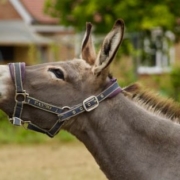In the five-year span between 2015 and 2020, the Internet of Things is expected to grow faster than any other category of connected devices. The number of machine-to-machine connections should grow nearly 2.5-fold, from 4.9 billion in 2015 to 12.2 billion in 2020.
However, in the IoT world, being able to run analytics as close to the source as possible has become a necessity in order to reduce the amount of data being transferred over the wire. Not only that, it’s also crucial if your goal is to provide quick feedback, even if limited, to the edge device (transportation vehicle, oil rig, mobile device, etc).











